Identify wildflowers on the go
Discover wildflowers when you're out and about with your mini pocket guide to the UK's common woodland plants.
Visit our shop
Volunteer content writer
Orchids can be a fantastic find when out for a walk. There are around 52 different species of wild orchid in Britain. Many of these species are incredibly rare and can often only be found on nature reserves that have special protection for the orchids. Orchids are among the most beautiful of the wildflower species in the UK.
During the summer time tends to be the best time to see orchids in their full colours. Dependent on the weather you can find orchid flowers from May to September. Orchids are found on calcareous soils such as chalk or limestone-based soil, however, there are orchid species found in most different habitats. Grassland meadows and disused areas are great places to start your hunt for wild orchids.
This species is one of the rarest wild orchids. It can spend most of its time underground and it can have up to 10-year gaps between flowering. It can be described by its creamy-white flowers where the lip has some small pink spots. It has no leaves and is dependent upon the fungi in the soil for its survival.
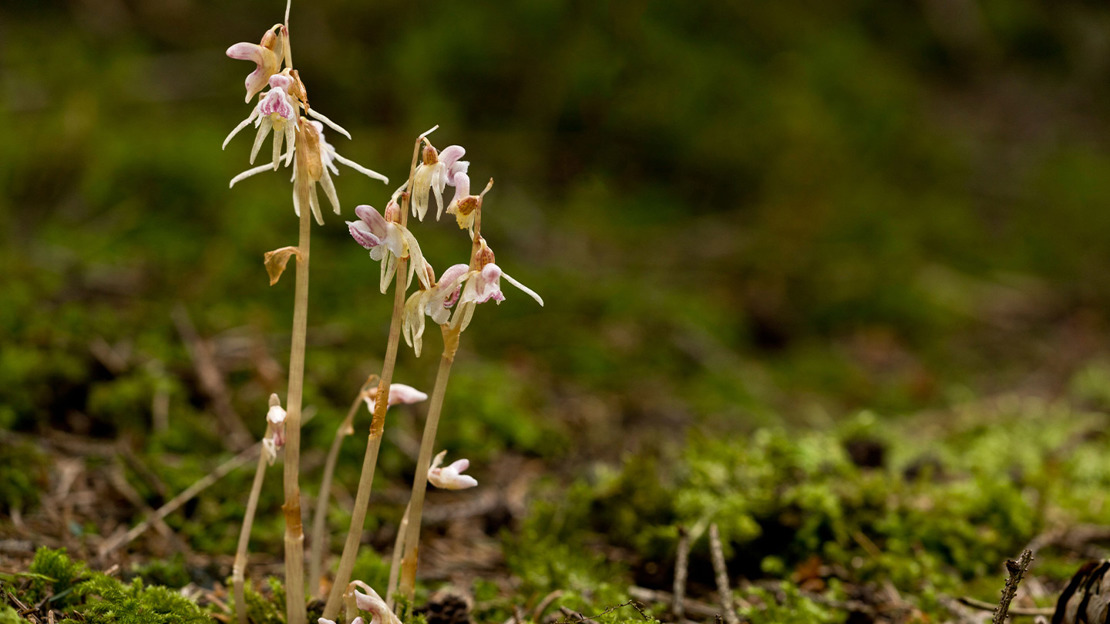
This species of orchid is famous for being the most widely illustrated species of all flowering plants. It’s easy to see why as the flower petals are a maroon colour that can often be spiralled and the sac of the orchid is bright yellow with some spots of red. It can grow up to 60cm tall and the stems are covered in hairs. This species is also rare in the UK and has been given special protection when specimens of the species are found.
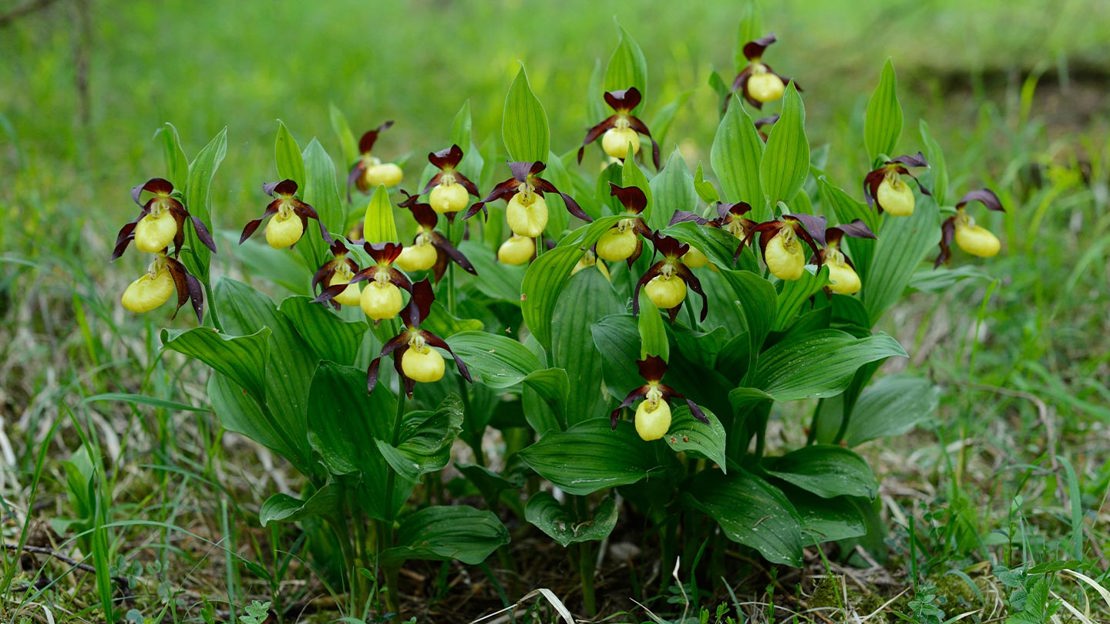
Another rare orchid species to the UK which only has localised population in the south of England. However, it is more common in other areas of Europe. It is described by its slender and wavy-looking stems with grey-green long narrow leaves. Each specimen can carry between 7 and 10 flowers that have a pink colour, however, more flowers can be possible.
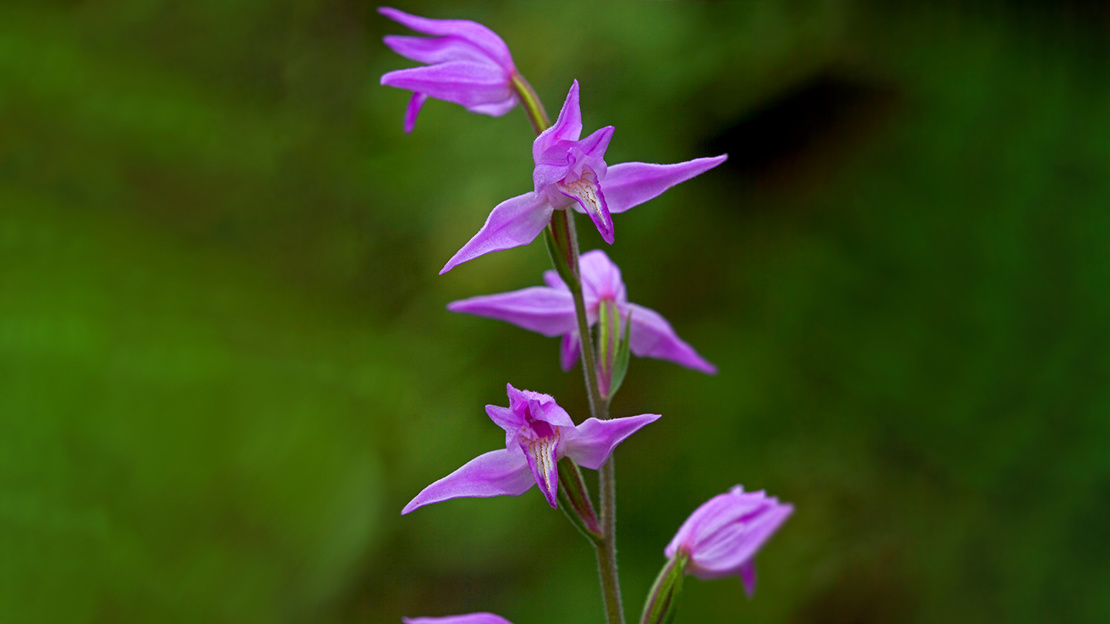
This species has seen a decline due to a lack of habitat. It grows in hay meadows, open scrub and grassland which have been decreasing as the ground is improved by fertiliser. This species is described by its whitish to yellow flowers and by a pair of large broad basal leaves. The species has a single spike which can grow up to 60 cm tall.
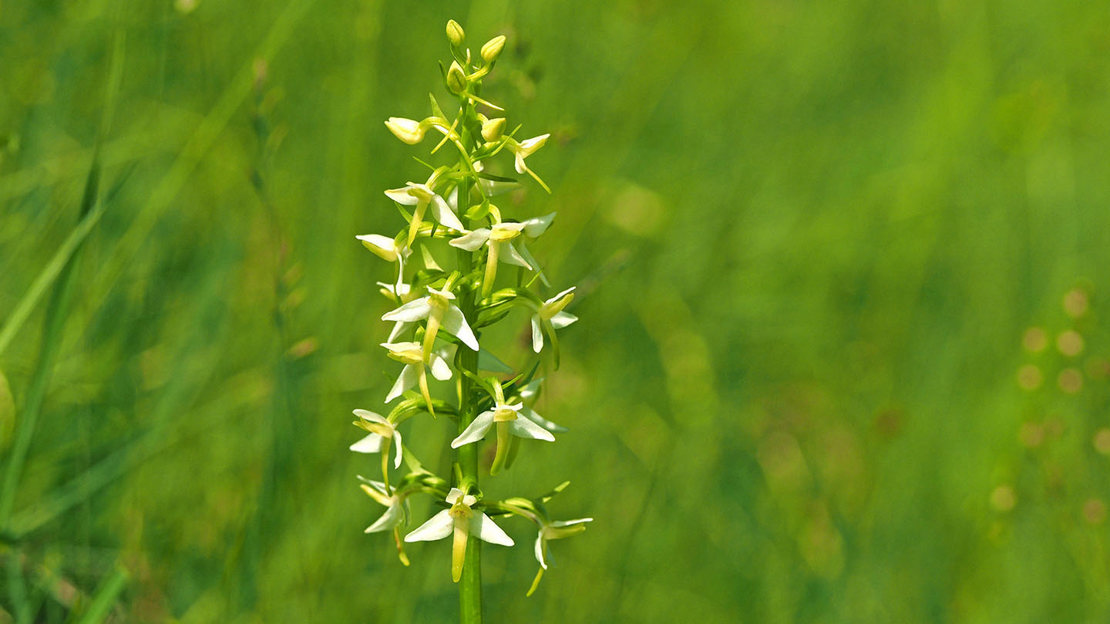
The species is the earliest orchid to appear in the UK orchid season. It can grow up to 20cm in the UK but due to its preferred Mediterranean climate, it can grow taller in warmer conditions. Each specimen can carry between 2-18 flowers. Each flower has green-yellow petals and the lip is a dark red-brown. This species tends to grow in scrub ground but also along woodland hedges.
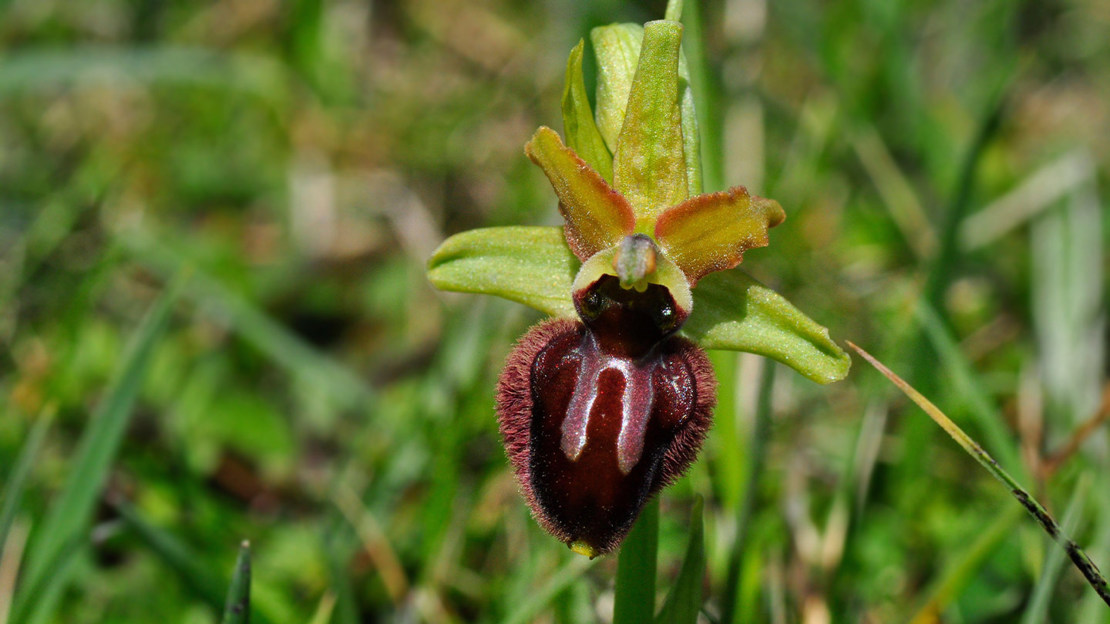
This species is more common throughout England and Wales and flowers in May and June. It has distinctive purple or pink flowers which have parallel green veins on the hood. These veins are not found on other similar looking orchids like the early purple orchid, which is more common.
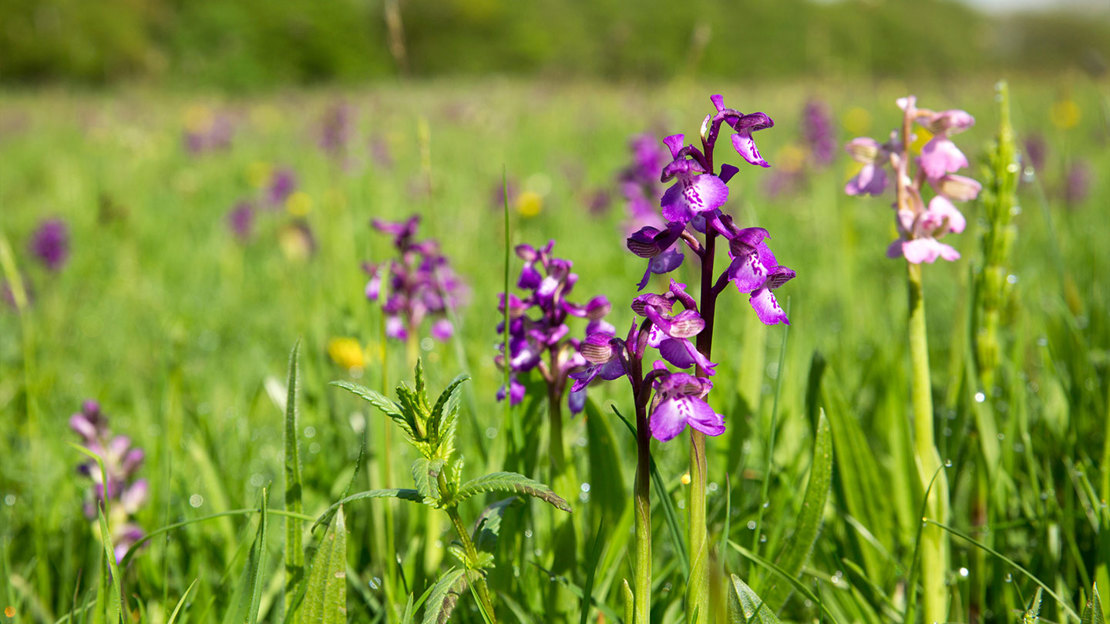
This orchid is quite rare to the UK but does have populations in Kent and Oxfordshire. It can grow up to 80cm tall. The flower spike can contain anything up to 200 individual flowers which have dark red upper petals forming a hood over the white and dark red lip. Given its size and vivid colours it is a truly stunning orchid.
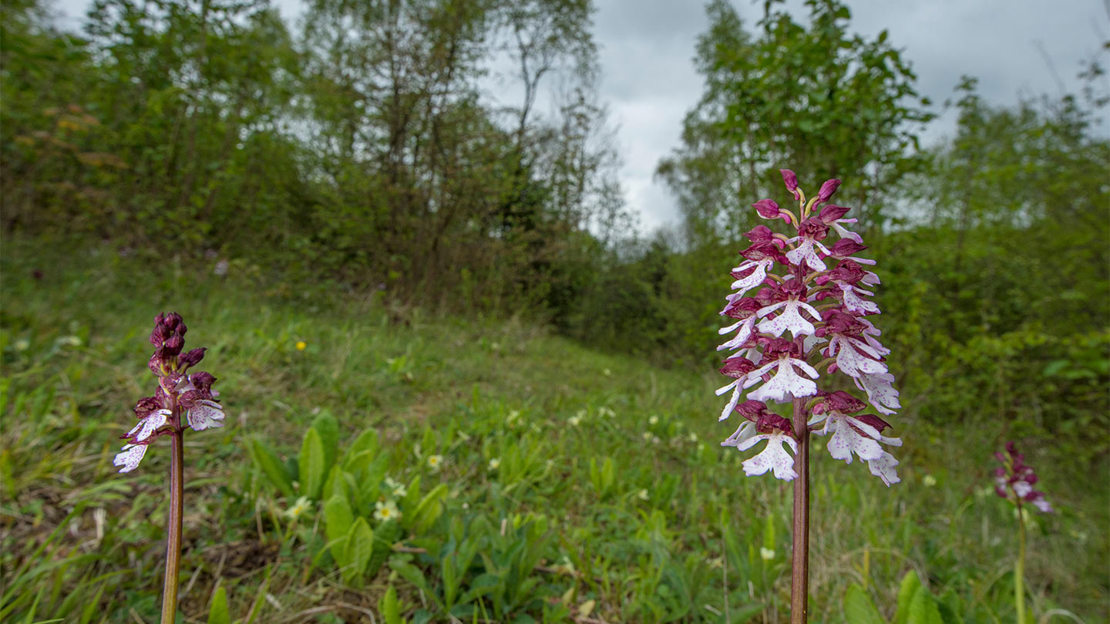
The fly orchid is aptly named as the flowers resemble flies. The lips of the orchid flower are dark brown in colour with two depressions at the base which almost look like the insects' eyes. It is a very distinctive orchid with each specimen carrying up to 15 flowers and the orchid often forms colonies of up to 10 plants. It is rare in the UK and is found more commonly in the south of England.
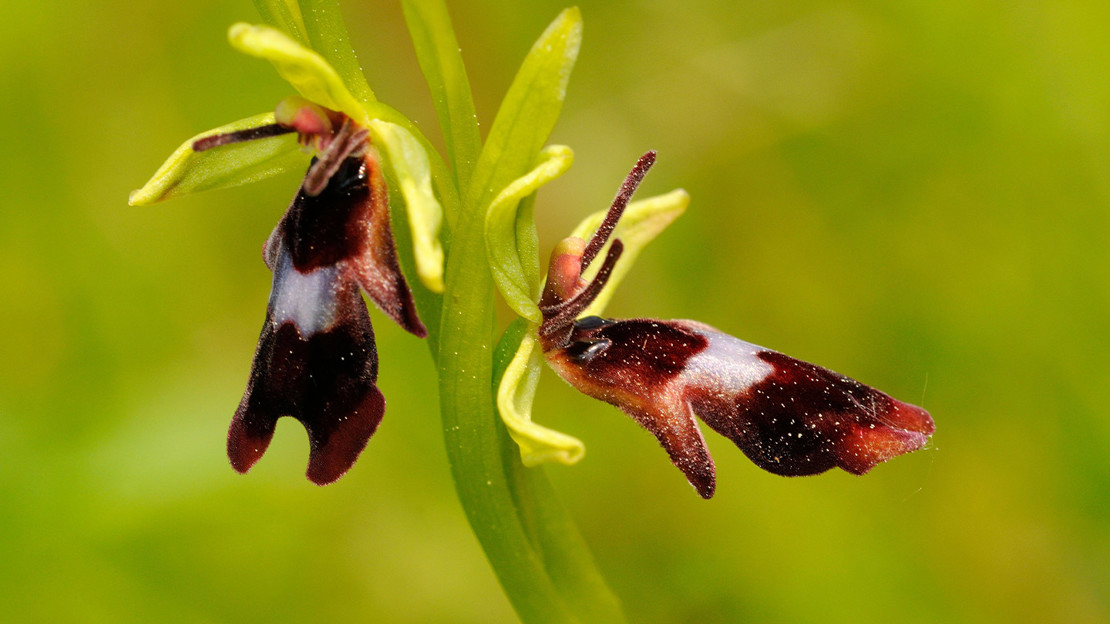
These plants are a slow grower, taking at least eight years to develop from seed and then the flowering can occur two or three years after that. This being said this species produces a beautiful white flower that does not open fully so the yellow lip is often not seen. It can grow up to 60cm in height and can have up to 16 flowers on each stem. It is commonly found in South-east England and south east Wales but is in decline due to a loss of habitat.
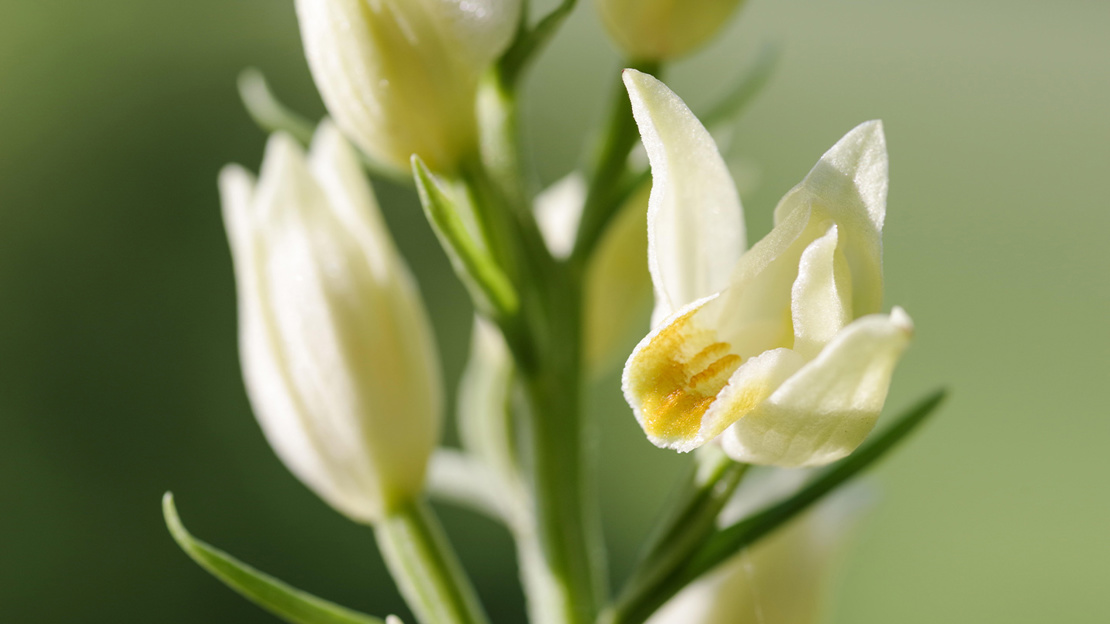
Discover wildflowers when you're out and about with your mini pocket guide to the UK's common woodland plants.
Visit our shop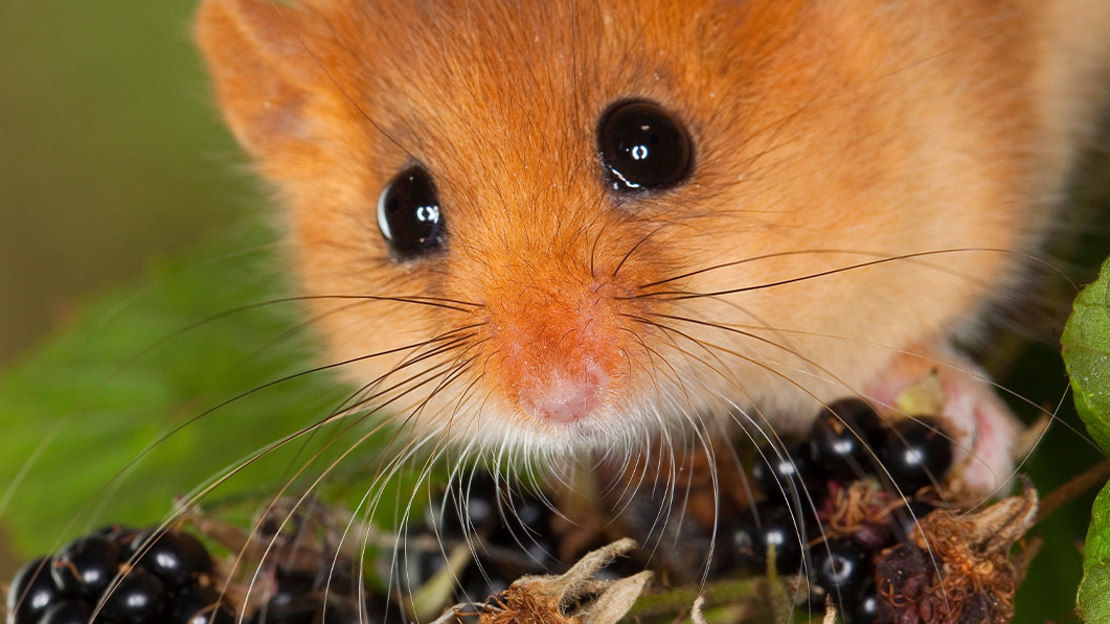
Woodland wildlife is fading before our eyes. Please support our appeal to save rare and threatened species.
Donate now